By Rhiannon Wooldridge, GWCT Scottland Lowlands placement student
The partridge pair surveys are an essential tool for monitoring the population dynamics of the grey partridge, Perdix perdix, a ground-nesting bird found in the UK and across Europe, that we use as an indicator species for farmland biodiversity.
Since the 1970s these birds have declined in numbers by more than 90% [1] and are among the topmost rapidly declining farmland bird in Europe, primarily due to habitat loss and changes in agricultural practices. Hence, all the work we do, including these surveys, are important to help monitor their numbers and to take measures to help protect these birds and other farmland biodiversity.
 Grey Partridge, Perdix perdix, (Photo by Amy Mason)
Grey Partridge, Perdix perdix, (Photo by Amy Mason)
The purpose of grey partridge pair surveys is to estimate the number of breeding pairs and are typically conducted in springtime before their nesting season begins. Here, in the Scottish Lowlands, we focus on Balgonie, situated near Glenrothes in Fife, with an area of around 750 hectares and the demonstration site for the PepsiCo FAB project.
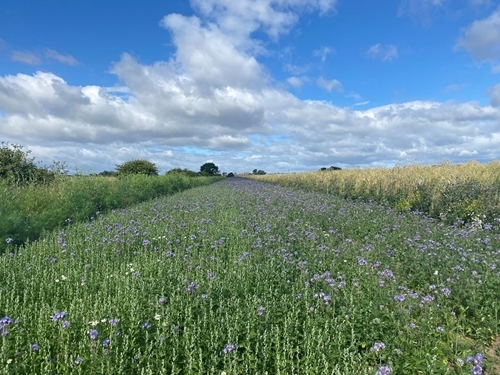
One of the wild bird seed blocks at Balgonie Estate (Photo by Amy Mason)
The survey involves driving up and down predetermined tramlines in each of the available fields.We complete this in an ATV in the spring as it enables us to cover more area of the farm, and we aim to head out three hours after sunrise and three hours before sunset, essentially around dawn and dusk, as the grey partridges are more active around this time.
The pairs are often spotted together in the fields as they rummage for food and shelter from predators. The second we see a grey partridge we add the point onto a map, record the date and record whether it is a single partridge, in which case we record the sex too (if possible), or if it is a pair.
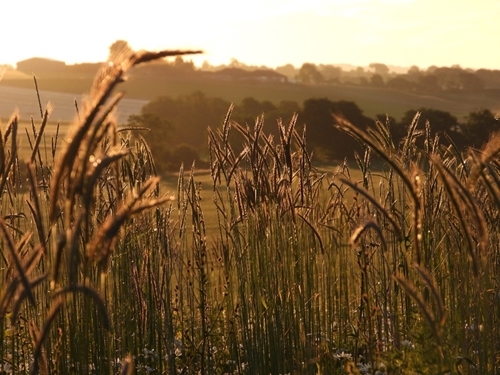
Balgonie farm (Photo by Amy Mason)
We’re equipped with ear defenders and binoculars in the field, although most of the time these charismatic birds can be seen running about with just the naked eye. The survey conducted is relatively simple with minimal equipment, which ensures that all the data collected is easily comparable across different locations as part of the Partridge Count Scheme (PCS).
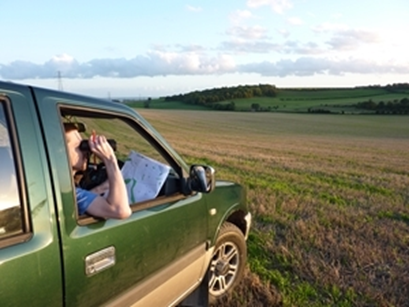
Partridge autumn count in action Photo by GWCT
All in all, partridge pair surveys are a good way to monitor their population dynamics and help identify which areas need more conservation efforts. The graph below illustrates the number of pairs seen at Balgonie over 10 years.
There were issues present for collecting the data in 2017 and 2020, involving gaining access to the ATV required for the surveys and COVID. Furthermore, the numbers in 2021 were also unusually low. It’s unsure why, but it is likely due to food availability and the number of invertebrates that year following a wet summer. Despite this, there is an overall clear positive trend in the number of pairs.
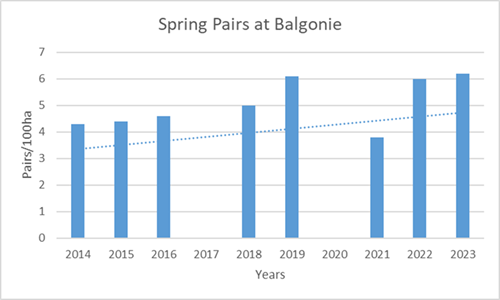
Personally, I enjoyed carrying out the partridge pair surveys as you get to watch a beautiful sunrise and sunset and see a number of different animals running around you, including several hares and roe deer. I also particularly loved getting up close and seeing the grey partridges and other farmland birds. Moreover, having the opportunity to be out in the field, taking part in these surveys, and actively helping to monitor grey partridges has been a really rewarding experience.
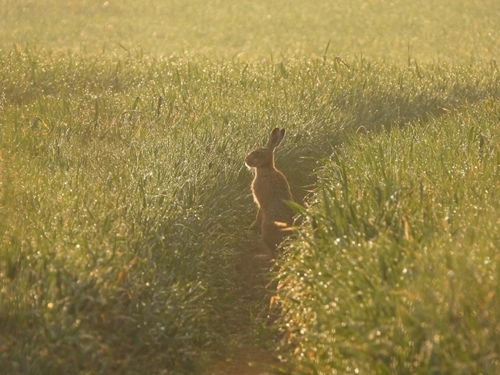
Brown Hare, Lepus europaeus, (Photo by Amy Mason)
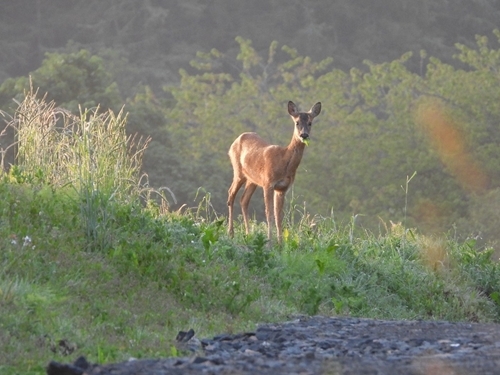
Roe Deer, Capreolus capreolus, (Photo by Amy Mason)
References
[1] – Jen Brewin, Francis Buner, Julie Ewald (2020) Farming with Nature - Promoting biodiversity across Europe through partridge conservation. The Game and Wildlife Conservation Trust, Fordingbridge, UK.